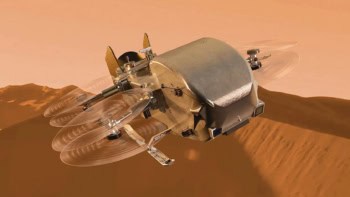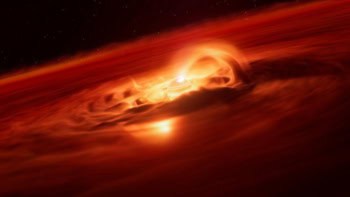A team of astronomers has detected a burst of very-high-energy gamma rays that was created over five billion years ago – the oldest such burst ever detected. On their journey to Earth, the gamma rays had to travel through the extragalactic background light (EBL), which is known to be a strong absorber of such gamma rays.
The fact that the burst was detected at all means that astronomers may be able to use such gamma rays to determine how the EBL changed over billions of years – something that could shed considerable light on how stars and galaxies form and evolve.
The universe is bathed in diffuse background light that comes from every star that has ever shone. As a result, the nature of this EBL could tell us much about the evolution of stars and galaxies over the history of the universe. However, because it is so faint compared to nearby stars and galaxies, it is very difficult to measure the EBL directly. As a result there are currently several theories about how much background light should be out there, and they make very different predictions.
History of the EBL
Very-high-energy gamma rays with energies between about 80 and 500 GeV can be used to probe the history of the EBL, particularly if they have travelled great distances across the universe. This is because the EBL is very good at blocking such gamma-rays and by measuring this effect, physicists can get a handle on the density of the EBL.
Now, Rudolf Bock of the Max Planck Institute for Physics in Munich along with other members of the MAGIC gamma-ray telescope collaboration have used the ground-based instrument to detect the oldest burst of such gamma rays ever seen (Science 320 1752). The radiation came from a distant quasar called 3C 279, which the team know is over 5bn light-years from Earth.
According to Bock, a key result of the measurement is that most current theories tend to over estimate the density of the EBL. This is actually good news for astronomers because it suggests that gamma-ray telescopes can be used to trace the evolution of the EBL much farther back in the history of the universe than most models had predicted.
He told physicsworld.com that it is likely that the technique developed by the MAGIC team “will teach us much more about the history of star formation”.
The measurement is also in line with estimates of the EBL made by the Hubble Space Telescope and Spitzer Telescope.



